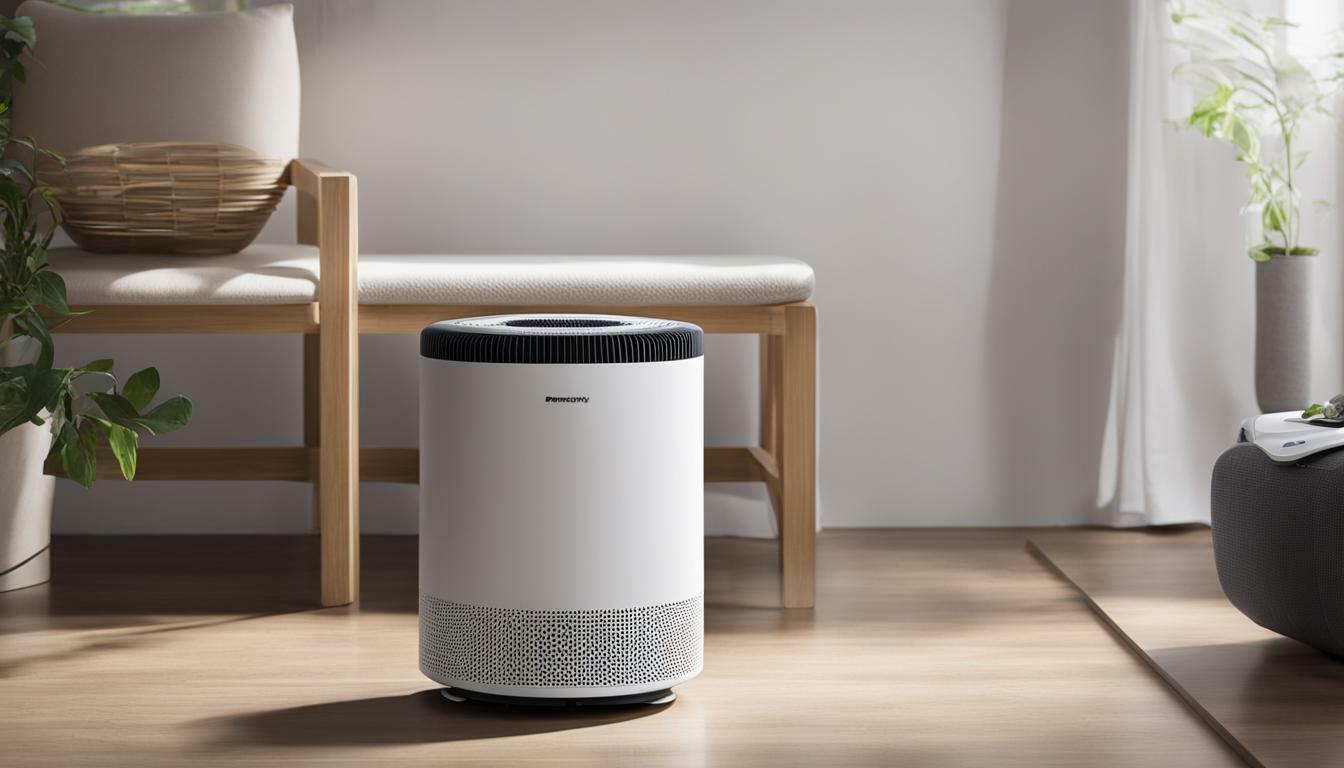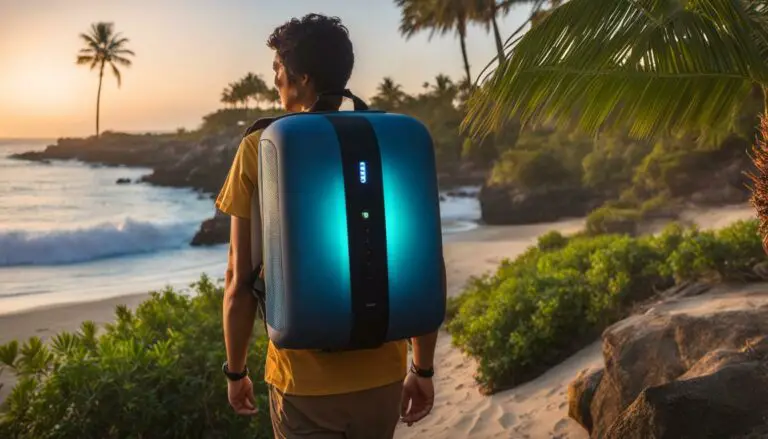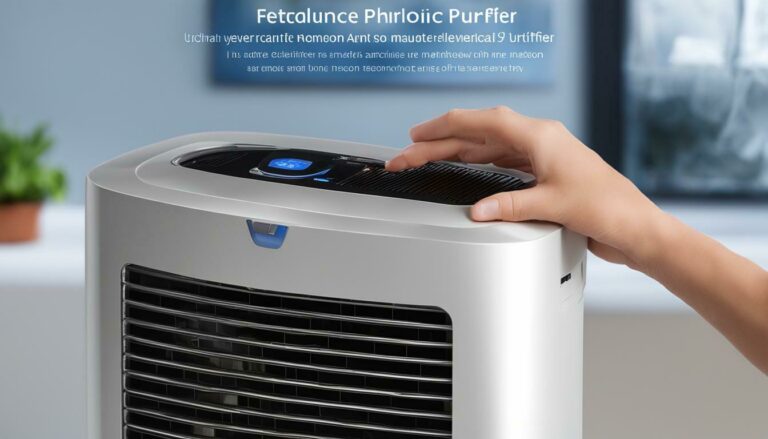Do Air Purifiers Remove Formaldehyde? Know the Facts.
Formaldehyde is a common indoor air pollutant that can have negative health effects. Many people wonder if air purifiers are effective in removing formaldehyde from their homes. The good news is that air purifiers can indeed remove formaldehyde, but it depends on the type of filter they use.
The main filter elements that can effectively remove formaldehyde are activated carbon filters, photocatalytic filters, and filters with potassium iodide or potassium permanganate. Activated carbon is recognized as a “universal adsorbent” and has the ability to effectively remove formaldehyde from the air. However, it’s important to note that activated carbon filters need to be replaced regularly to maintain their effectiveness. Photocatalytic filters, on the other hand, use ultraviolet rays and photocatalysts to decompose formaldehyde into harmless byproducts.
It’s also worth mentioning that HEPA filters, which are commonly used in air purifiers, are not effective at removing formaldehyde. While HEPA filters are great at capturing other pollutants, they are not specifically designed to target formaldehyde.
When looking for an air purifier specifically for formaldehyde removal, it’s important to consider the formaldehyde CADR (cubic meters of air output per hour after removing formaldehyde). Air purifiers with a high formaldehyde CADR have a stronger ability to remove formaldehyde from indoor air.
However, it’s essential to keep in mind that while air purifiers can help remove formaldehyde, proper ventilation is also recommended, especially in cases where indoor formaldehyde levels are high. Opening windows frequently can help reduce formaldehyde levels in indoor air.
Key Takeaways:
- Air purifiers can effectively remove formaldehyde from indoor air, depending on the type of filter they use.
- Activated carbon filters are recognized as highly effective in adsorbing formaldehyde molecules.
- Photocatalytic filters use ultraviolet rays and photocatalysts to decompose formaldehyde into harmless byproducts.
- HEPA filters, although effective for capturing other pollutants, are not designed to effectively remove formaldehyde.
- Proper ventilation, along with air purifier use, is recommended for formaldehyde removal.
How Do Air Purifiers Remove Formaldehyde?
Air purifiers can remove formaldehyde from indoor air through various filtration methods. The main filter elements that can effectively eliminate formaldehyde are activated carbon, photocatalytic filters, and filters with potassium iodide or potassium permanganate.
Activated carbon, also known as a “universal adsorbent,” is recognized for its ability to adsorb formaldehyde molecules. This type of filter works by trapping formaldehyde and other volatile organic compounds (VOCs) within its porous structure. However, it’s important to note that activated carbon filters need regular replacement to ensure their continued effectiveness in removing formaldehyde.
Photocatalytic filters, on the other hand, utilize a combination of ultraviolet rays and photocatalysts to decompose formaldehyde into harmless byproducts. When exposed to UV light, the photocatalyst initiates a chemical reaction with formaldehyde, breaking it down into water vapor and carbon dioxide. Air purifiers equipped with photocatalytic filters can offer an effective solution for formaldehyde removal.
While air purifiers play a crucial role in reducing formaldehyde levels in indoor air, it’s essential to consider their formaldehyde CADR (cubic meters of air output per hour after removing formaldehyde) when selecting the right model. Air purifiers with a higher formaldehyde CADR have a stronger ability to remove formaldehyde from the air.
However, it’s important to note that while air purifiers can effectively remove formaldehyde, proper ventilation should also be considered, especially in spaces with high formaldehyde levels. Opening windows frequently allows fresh air to circulate and can help reduce the concentration of formaldehyde in indoor air.
Activated Carbon Filters for Formaldehyde Removal
Activated carbon filters are considered one of the most effective methods for removing formaldehyde from indoor air. These filters are known for their ability to adsorb and trap formaldehyde molecules, preventing them from circulating in the air we breathe.
The activated carbon material has a porous structure that provides a large surface area for trapping gases and volatile organic compounds (VOCs) like formaldehyde. As the polluted air passes through the filter, the activated carbon attracts and holds onto the formaldehyde molecules, effectively removing them from the air.
When choosing an air purifier for formaldehyde removal, look for models that feature high-quality activated carbon filters. These filters should be regularly replaced to ensure their effectiveness. Some air purifiers even have indicator lights or notifications to remind you when it’s time for a filter replacement.
Top Air Purifiers for Formaldehyde Removal:
- Brand A Model X: This air purifier utilizes a combination of activated carbon and HEPA filters to effectively remove formaldehyde.
- Brand B Model Y: Equipped with a specialized activated carbon filter, this air purifier is designed specifically for formaldehyde elimination.
- Brand C Model Z: Known for its high formaldehyde CADR, this air purifier is highly recommended for spaces with high formaldehyde levels.
While air purifiers with activated carbon filters can significantly reduce formaldehyde levels in indoor air, it’s important to remember that proper ventilation is also crucial. Opening windows frequently allows fresh air to circulate, further aiding in the removal of formaldehyde and other indoor pollutants.
By investing in an air purifier with an activated carbon filter and practicing good ventilation habits, you can create a healthier indoor environment free from the harmful effects of formaldehyde.
Photocatalytic Filters for Formaldehyde Removal
Photocatalytic filters use advanced technology to break down formaldehyde molecules and eliminate them from indoor air. These filters combine the power of ultraviolet rays with photocatalysts, such as titanium dioxide, to catalyze a chemical reaction that converts formaldehyde into harmless byproducts. When exposed to ultraviolet light, the photocatalyst becomes activated and begins the process of decomposing formaldehyde. This technology is highly effective in removing formaldehyde and other volatile organic compounds (VOCs) from the air.
Air purifiers equipped with photocatalytic filters have been proven to significantly reduce formaldehyde levels in indoor spaces. These filters not only remove formaldehyde particles from the air, but they also neutralize its harmful effects. The byproducts produced during the decomposition process, such as carbon dioxide and water, are safe and non-toxic. This makes photocatalytic filters a desirable option for those seeking to improve indoor air quality by reducing formaldehyde pollution.
Choosing the Right Air Purifier for Formaldehyde Removal
When selecting an air purifier for formaldehyde removal, it is crucial to consider the formaldehyde Clean Air Delivery Rate (CADR) of the unit. The CADR indicates the volume of air that the purifier can effectively treat per hour after removing formaldehyde. Higher CADR numbers signify a stronger ability to eliminate formaldehyde from the air. Additionally, look for air purifiers that feature photocatalytic filters specifically designed to target formaldehyde. These filters are optimized for formaldehyde removal and often provide the best results.
- Check the CADR rating for formaldehyde removal
- Look for air purifiers with specialized photocatalytic filters
- Consider the size and coverage area of the air purifier
- Read customer reviews and ratings to gauge effectiveness
While air purifiers with photocatalytic filters are effective in removing formaldehyde, it’s important to note that they should be used in conjunction with proper ventilation. Opening windows regularly allows fresh air to circulate and further reduce formaldehyde levels in indoor spaces. By combining the power of photocatalytic filters and proper ventilation, you can effectively create a healthier and formaldehyde-free environment for yourself and your loved ones.
Effectiveness of HEPA Filters in Formaldehyde Removal
Although HEPA filters are highly efficient in capturing small particles, they are not as effective in removing formaldehyde from the air. HEPA (High-Efficiency Particulate Air) filters are designed to trap airborne particles such as dust, pollen, pet dander, and mold spores. Their fine mesh can capture particles as small as 0.3 microns with an efficiency of 99.97%. However, formaldehyde molecules are much smaller than these particles, usually measuring around 0.0006 microns in size.
Due to the size difference, formaldehyde molecules can easily pass through HEPA filters and remain in the indoor air. Therefore, relying solely on HEPA filters may not be sufficient for eliminating formaldehyde pollution. It is important to note that even though formaldehyde may not be removed by HEPA filters, these filters can still help improve overall indoor air quality by capturing other pollutants.
To effectively remove formaldehyde from indoor air, it is recommended to use air purifiers equipped with additional filter elements such as activated carbon or photocatalytic filters. Activated carbon filters are recognized as highly efficient in adsorbing formaldehyde molecules, while photocatalytic filters utilize ultraviolet rays and photocatalysts to break down formaldehyde into harmless byproducts. Air purifiers with a high formaldehyde CADR (cubic meters of air output per hour after removing formaldehyde) are generally more effective at eliminating formaldehyde.
However, it is important to note that air purifiers alone may not be the sole solution for reducing formaldehyde levels in indoor air. Proper ventilation, achieved by frequently opening windows, is also recommended, especially in situations where formaldehyde levels are high. Ventilation allows fresh air to circulate and helps reduce the concentration of formaldehyde in the indoor environment.
The Role of Proper Ventilation in Formaldehyde Removal
While air purifiers can aid in formaldehyde removal, proper ventilation through regular window opening is also crucial for maintaining healthy indoor air quality. Air purifiers equipped with specialized filters, such as activated carbon and photocatalytic filters, are effective in reducing formaldehyde levels. However, it’s important to understand that air purifiers alone may not completely eliminate formaldehyde from the air.
Proper ventilation plays a significant role in formaldehyde removal as it helps to dilute and replace the polluted indoor air with fresh outdoor air. Opening windows frequently allows for the exchange of stale air containing formaldehyde with clean air from outside. This natural air circulation helps to reduce formaldehyde concentrations, particularly in areas where high levels of formaldehyde are present, such as newly constructed or renovated spaces.
By combining the use of air purifiers with proper ventilation, you can enhance the effectiveness of formaldehyde removal from your indoor environment. Air purifiers can help capture and trap formaldehyde particles, while ventilation ensures a constant flow of fresh air, reducing the overall formaldehyde levels. This dual approach is especially beneficial in areas where formaldehyde is a persistent concern, such as homes with new furniture, carpets, or paint.
Remember to regularly replace the filters in your air purifier, particularly the activated carbon filter, to ensure its continued effectiveness in removing formaldehyde. Additionally, make it a habit to open windows for at least a few minutes every day to allow for proper air exchange and maintain a healthy indoor environment free from formaldehyde pollutants.
FAQ
Q: Do air purifiers remove formaldehyde?
A: Yes, air purifiers can remove formaldehyde from indoor air, but it depends on the type of filter they use.
Q: How do air purifiers remove formaldehyde?
A: Air purifiers can remove formaldehyde using activated carbon filters, photocatalytic filters, or filters with potassium iodide or potassium permanganate.
Q: Are activated carbon filters effective for formaldehyde removal?
A: Yes, activated carbon filters are recognized as highly effective in adsorbing formaldehyde molecules.
Q: How do photocatalytic filters work for formaldehyde removal?
A: Photocatalytic filters utilize ultraviolet rays and photocatalysts to decompose formaldehyde into harmless byproducts.
Q: Are HEPA filters effective in removing formaldehyde?
A: No, HEPA filters are not designed to effectively remove formaldehyde from indoor air.
Q: Should I also practice proper ventilation for formaldehyde removal?
A: Yes, proper ventilation is important in conjunction with air purifier use for formaldehyde removal. It is recommended to frequently open windows to reduce formaldehyde levels in indoor air.


